
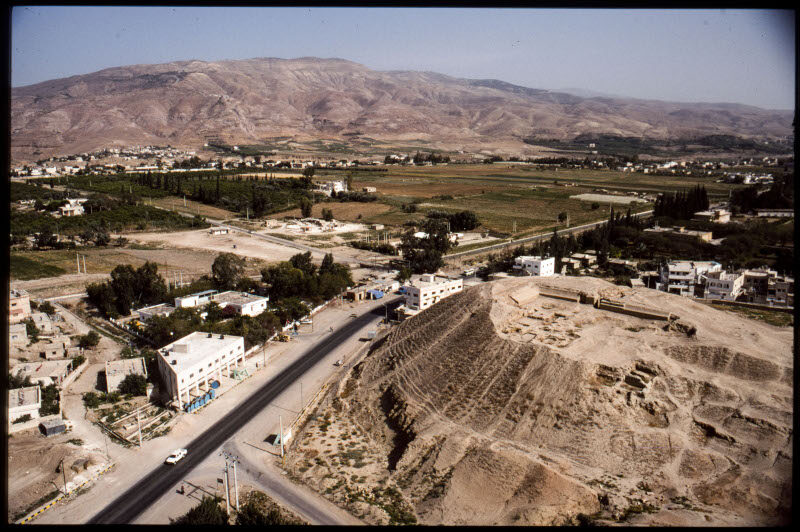
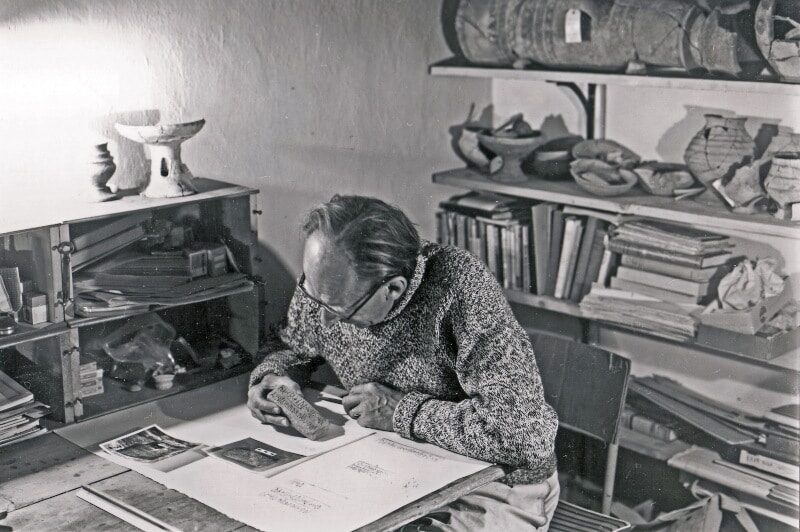
Among the many finds associated with the Late Bronze Age temple were ceramics including goblets and ceremonial vessels, Mycenean imports, scaled armor and scarabs, and faience vessels including a gift from Egyptian Queen Twosret which provided an approximate dating for the destruction not too long after 1180 BCE. But most striking perhaps were some clay tablets which bore a script that still have no exact parallels.
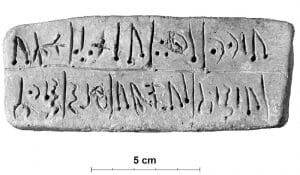

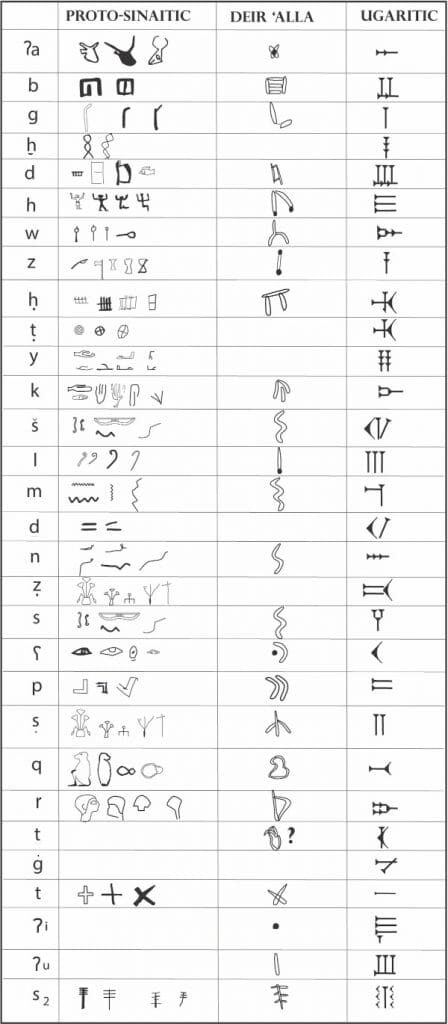
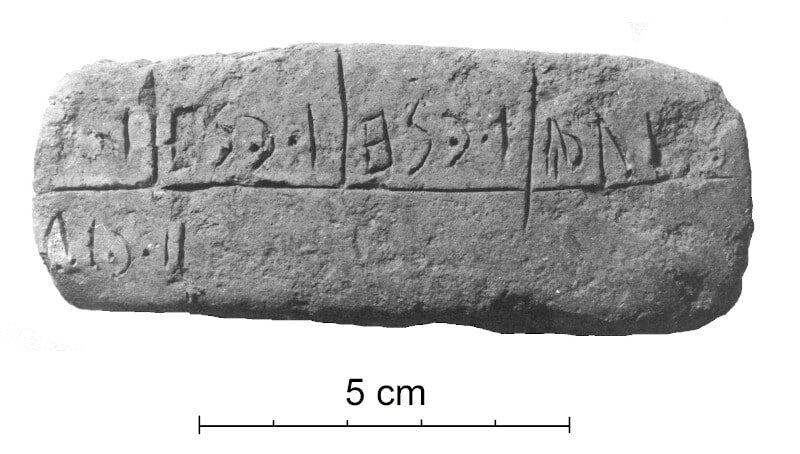
In 2014, archaeologist Gerrit van der Kooij published an overview of the tablets bearing script and established the writing direction as left to right. Using these paleographic observations but altering the sign list, new insights could be gained from the tablets. It can now be established that the script was predominantly written from left to right and contained a small enough number of signs (around 29) to justify calling it an alphabet.
Building on these conclusions it seems that the Deir 'Alla tablets indeed bear a unique form of alphabet that shares similarities with its apparent ancestors (the proto-Sinaitic script) and sister proto-Canaanite alphabets attested at other Late Bronze Age sites and predominantly found in the Shephelah area. These contemporary alphabets allowed for the confident identification of some parallel consonants in the Deir 'Alla script. The Deir 'Alla script also shows some unique sign combinations, particularly two signs which co-occur with a sign resembling an eye. This sign can be identified as an ʿayin — inherited from the alphabets' pictographic days and denoting the word 'eye' (ʿayin) — thus the letter ʿakin.
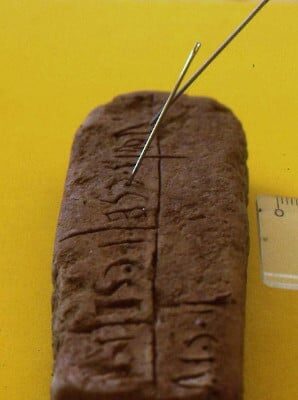
Using some sign identifications based on parallels and patterns within the Deir 'Alla tablets themselves, a preliminary identification of most signs can be offered. This allows the language in the tablets to be identified as Northwest Semitic, which we can call Canaanite after its Late Bronze Levantine inhabitants. Nevertheless, the reading of the tablets remains problematic and far from ideal. What does seem clear is that by reading the signs with reference to later Hebrew grammar, which preserves earlier Canaanite forms, the texts appear to contain short ritual utterances and poetic proverbs written within a cultic setting, related to the temple activities. A very preliminary reading of tablet 3524 is thus:
a.1 forget| [the] city which is twisted/conspiring | twisted/crooked? a.2 the praised . . . [broken] | and they filled . . . ?
b.1: the mound(s) he would go | and on that (which) burns
b.2: brought out | and they became vain? | like the chief /cattle /a thousand?
c.1: and to the sheep food/ (alt.) and from the lamb she has eaten | they give
d.1: the oppression | despise |and strive with
e.1: the heart/lion/ (alt.) she shall shave
Far more research is needed to fully understand these texts.
The significance of this unique Canaanite alphabet at Deir 'Alla is manifold. For one thing it is the only Late Bronze Age alphabet we have from Jordan. In general, the sporadic nature of alphabetic writing during the Late Bronze Age has largely been explained as a function of inscriptions having been written on perishable media such as papyrus and parchments. The fact that the scribes at Deir 'Alla used clay tablets for their scripts, and the additional 'bonus' of heavy burning which improved their survival are thus an exceptional opportunity to explore writing in this crucial period of Levantine history.
The tablets help us better understand the Canaanite language spoken in this region. But their association with ritual practices also points to another important conclusion. As far as we know, literacy was not very widespread until the later Iron Age. During the Bronze Age writing only occurred in certain pockets and was directly related to the scribal practices of powerful neighbors such as the Egyptian state, and the Mesopotamian dominated writing practices to the north (Hazor and Ugarit). Although the alphabet was most likely invented in the Middle Bronze Age, its presence is ephemeral until the Iron Age. This might be because of limited preservation, except in cases such as Ugarit, where texts were written on clay tablets and within a highly literate society, but it could also point to something else.
Alphabetic writing could have been used locally among small groups of scribes, perhaps partially concentrated within temple settings. The Deir 'Alla tablets might be the last remnant of a practice of writing curated by temple institutions in the Southern Levant, before this Bronze Age world succumbed to wide scale collapse across the wider region. Both the Ugaritic and the Deir 'Alla alphabet disappeared around the same time. Like the cuneiform alphabetic script of Ugarit, the Deir 'Alla tablets thus attests to extinct alphabetic species, which upon their demise gave way to one dominant alphabet in the Early Iron Age Levant, which eventually made it to the letters we know.
Michel de Vreeze is Honorary Research Fellow at the University of Durham.
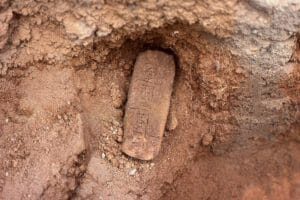
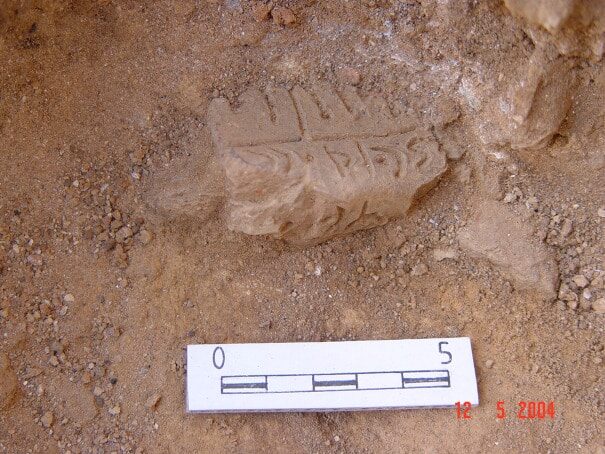



Comment: See also: 4,400 year old Iranian cuneiform-type writing deciphered by French archaeologist